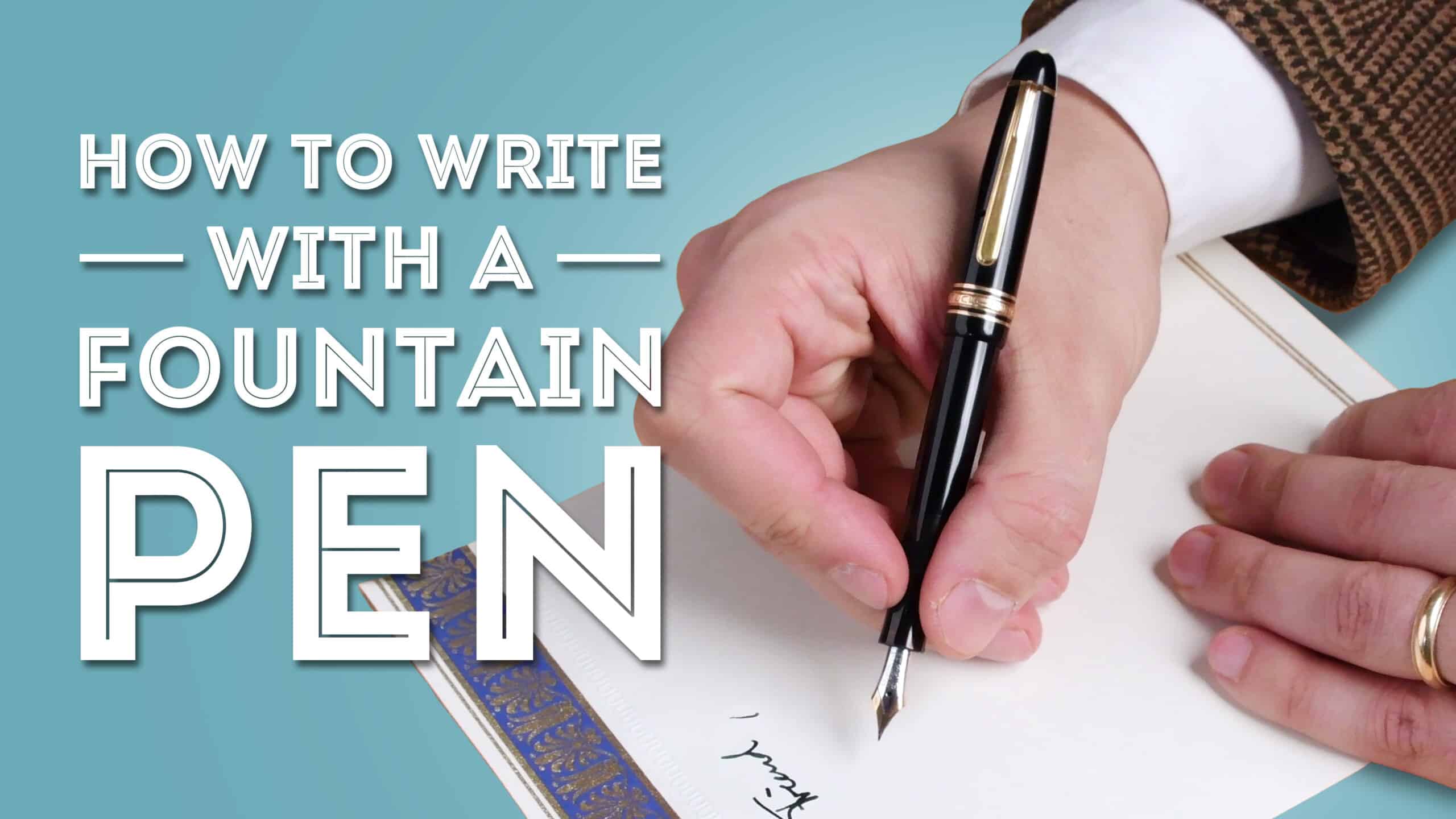Are Fountain Pens Easy to Write With
In the U.S., writing with a fountain pen is not something that you learn in school (unlike in other countries, especially in Europe), but many people find that they enjoy writing with a fountain pen much more than with a ballpoint pen or any other kind of pen because it's more deliberate and intentional. Here's our guide on how to do it!
Using A Fountain Pen Is A Special Writing Experience
These days with technology and innovation, we don't even need to write by hand anymore, but we can just send messages or emails through our cell phones or laptops. However, a handwritten note can really convey that you really care about the recipient and they feel much more valued, than if you sent them a digital communication.
Even though you can use a ballpoint pen or a roller-ball, using a fountain pen gives you that unique character to your handwriting that can't be replicated by anyone else. Why is that? A fountain pen has a metal nib with two tines, and you can control the thickness of the line by applying more or less pressure. Forging a nib is an art of its own, and the higher-end ones are made out of 18-karat or even higher karat degrees of gold. For example, all Mont Blanc Meisterstück pens come with a solid gold nib (contributing to their price tag).
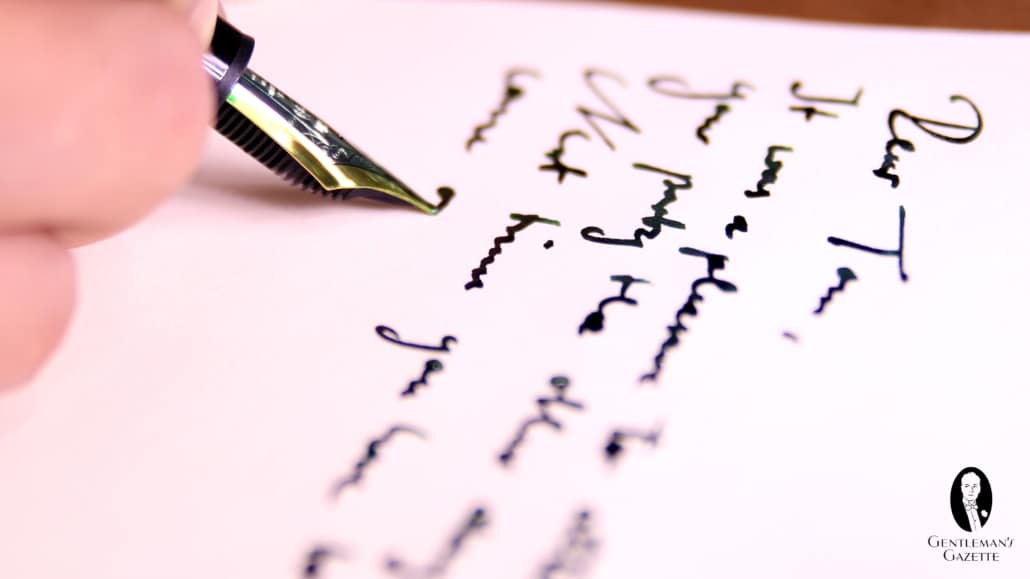
In general, prices for fountain pens can range from very few dollars to thousands of dollars. To learn more about inexpensive fountain pens and mid-range fountain pens check out our guides! Now, if a fountain pen is more expensive than a ballpoint pen or a rollerball, why would you want to invest in one? Well, the connoisseur appreciates the personality added to his penmanship, and it's just a very different writing experience.
The look of the pen may underline your personality; the way it feels and writes are also potential attributes that you won't find in other writing instruments. So, if you're ready to give writing with a fountain pen a try, read on to find out how to choose a fountain pen that's best for you, how to use it, and how to write with it so it brings you joy.
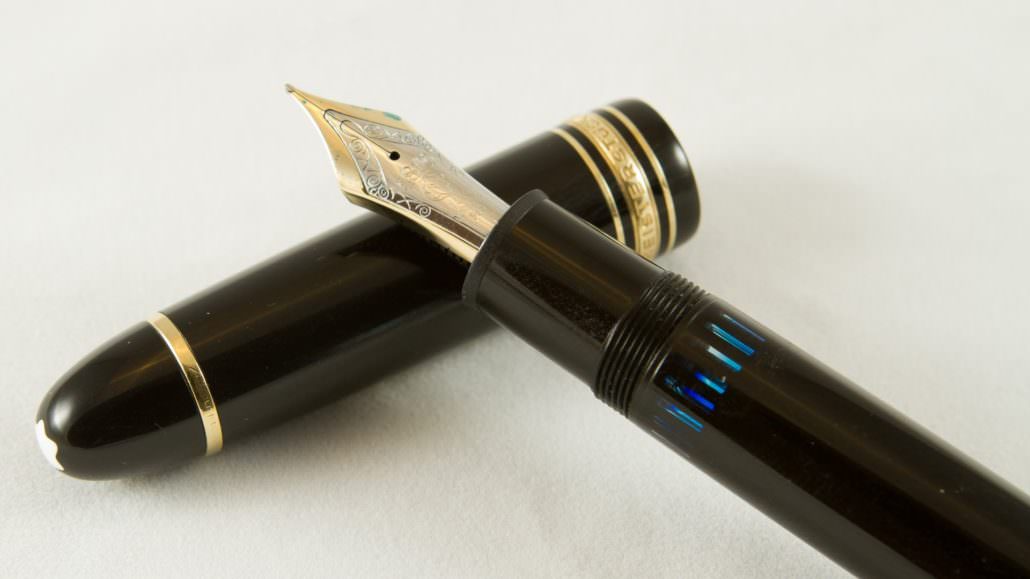
Choosing Your Fountain Pen
1. Size
A fountain pen is a very personal instrument and it's supposed to be perfect for your hand; if you have a big hand, get a bigger fountain pen. If you have a smaller hand, get a smaller one. When in doubt, it should never be too short and rather be a little longer, but you also want to pay attention to the width. When you hold it and if the pen is too wide, it may be uncomfortable to write with it. Frankly, there's no clear-cut answer for it, you simply have to try different ones, and different widths and lengths to figure out what feels comfortable in your hand.

2. Weight
The second thing to pay attention to is the weight. In general, we often associate weight with something luxurious that is really full of craftsmanship. For fountain pens, that may be really nice if you just want one to sign something, but if you want it to write into letters that are pages long, you want something that is not too heavy, otherwise, your hand will tire out more quickly.
Again, figuring out whether something is too light or too heavy, also depends a bit on your personal preference; so I urge you to try different fountain pens at a store or something that is sent to you but always get a selection, so you can make sure you find something that really works for you. And don't just settle for the first fountain pen you come across. Likewise, just because it's expensive and a recognizable brand name doesn't mean it's best for you and your hand and your needs.

3. Filling Mechanism
To write with the fountain pen, you need ink and it is typically found in a little cartridge inside the fountain pen. They're basically small, disposable plastic tubes that hold the ink and they're widely available. Yet, finding different colors can be a bit more tricky. Some brands also design their cartridges so you can only buy proprietary ones, which limits you in the choices of ink and it's also more expensive, the longer you have the fountain pen.
Because of that, many people switch to a converter which is basically another plastic tube with a little mechanism so you can manually add ink to it and therefore, you open up the whole range of inks on the market. It's also much less expensive, less harsh on the environment, and overall the more sensible choice.
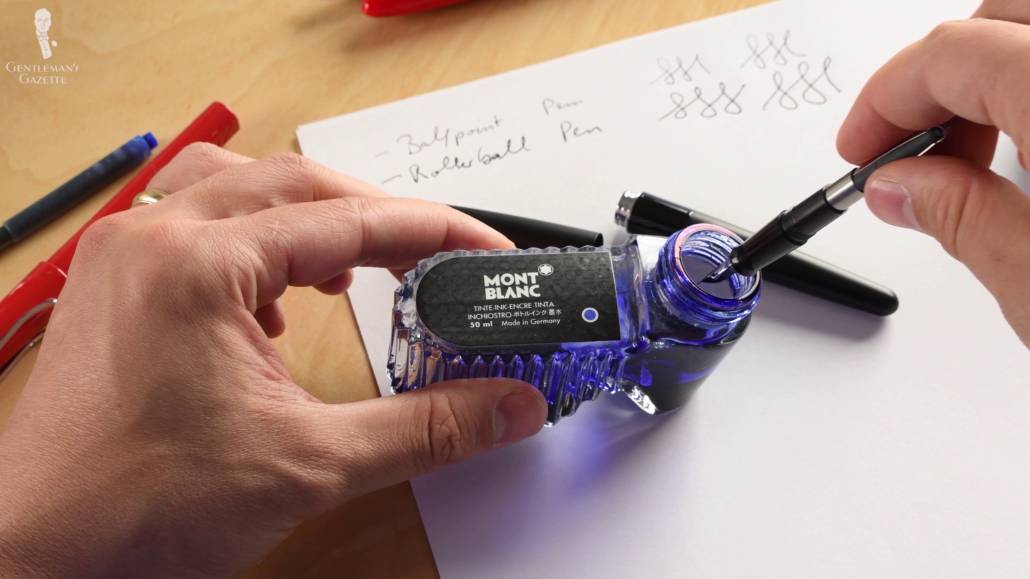
A more old-school way to re-ink a fountain pen is a piston mechanism. Typically, you just turn the spindle of the fountain pen which pushes a piston back and forth. It creates a low-pressure environment that sucks in the ink inside the fountain pen. When you do that, always make sure there's a little bit of air left inside the piston, otherwise the ink flow may not be as smooth and nice as you want it to be.
In my opinion, it's much more elegant than using cartridges or a converter and it's my fountain pen mechanism of choice. In the early days of fountain pens, you could also find models with a lever and an ink-sac inside or some push-button mechanisms, but none of them have stood the test of time. And today the piston, the converter, and the cartridges are basically the options you have.
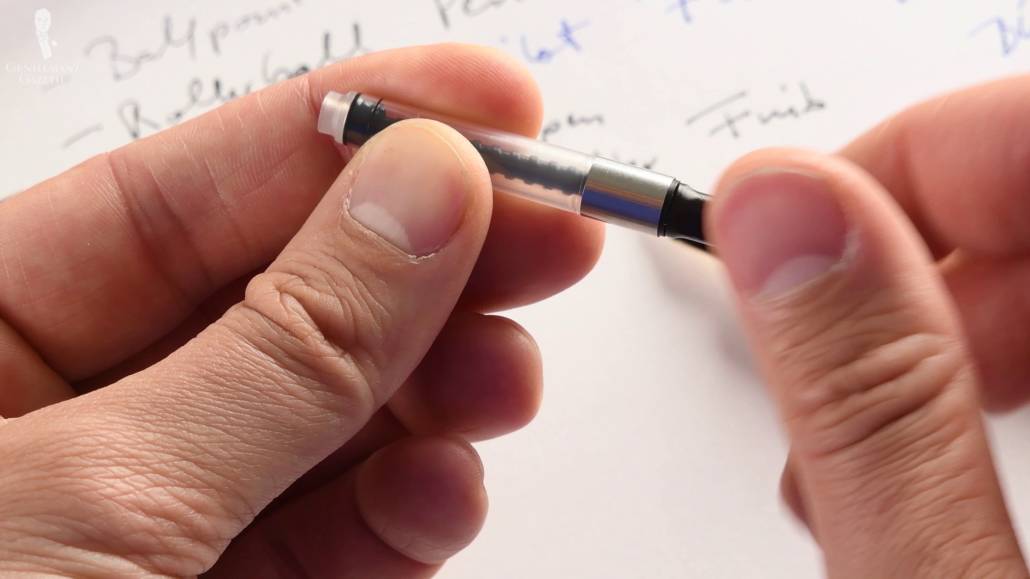
4. Nib
Material
First of all, the material can be important and of course, the workmanship of the nib and how refined it is. Generally, the softer and more flexible the nib is, the better. While steel nibs are rather smooth and very economical, higher-end fountain pens typically come with gold or palladium nibs. Whatever the case, they'll almost always have an Iridium-tipped point which hardens it because that's where the nib touches the paper. Of course, gold and palladium tips are also much more expensive than more economical steel or other metal nibs.
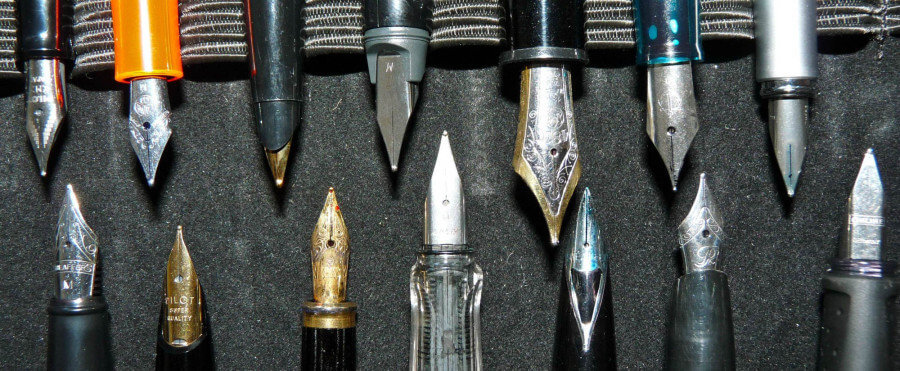
Size & Tip
On top of that, the size of the nib itself is also important; the larger the nib, typically, the nicer it is to write with it. Because of that, the most expensive fountain pens typically have larger nibs than less expensive fountain pens. Again, if you need twice as much gold for a nib for a big one, it gets even more expensive. The one thing even more important than the nib size is the tip of the nib, because that's what you write with. These days you find extra-fine, fine, medium, broad, and very broad nibs; they're often abbreviated as F, EF, M, B, and BB.
One hundred years ago, fountain pen manufacturers would offer 50 different kinds of nibs including extra, extra fine, and extra broad. They also had stub nibs and oblique nibs that were slightly cut and angled just to get a different look. If you're just starting out or if you're a lefty, I suggest going with a fine nib or maybe a medium nib; this will give you greater flexibility and make it easier to write with it. Of course, you should always nibs in various widths if you're able, so you can better understand how they look and feel differently.
In general, if you have a big hand and big handwriting, a slightly broader nib may look more appealing. On the flip side, if you like an elegant look and you have small handwriting, an extra-fine tip may be the right one for you. In calligraphy, stub or italic nibs are very popular. Personally, I like really wide nibs for signatures because they give it a unique look that is very hard to fake. So, for signatures, I typically use an oblique 3B nib, which is a triple width and it's very wide. I wouldn't want to write letters with it though, because it's uncomfortable.
Medium-sized nibs are the most common standard sizes and I like my handwriting to look a little different, so when I write longer letters, I typically go with something extra fine. That being said, I'm a big fan of flexible nibs that allow me to create a very fine, thin line if I apply less pressure and a much wider line if I apply more pressure. Oftentimes, vintage fountain pens have much more flexible nibs than modern fountain pens; so if you like the variation in your stroke, maybe you have to look into vintage fountain pens first.

Writing With A Fountain Pen
1. Use A High-Quality Paper
Many regular printer papers are not really suited for fountain pen ink because as soon as you write on them, the ink bleeds and looks very bad. Instead, buy a paper that is made for fountain pens and when you write on it, it will look beautiful. The same is true for stationary if you want to write greeting cards — make sure it works with a fountain pen. A good paper doesn't feather or run and it is often made out of cotton; so before you buy a paper, ask specifically if it's meant to be written on with fountain pens or buy from a source that supplies them and advertises them as fountain pen paper.
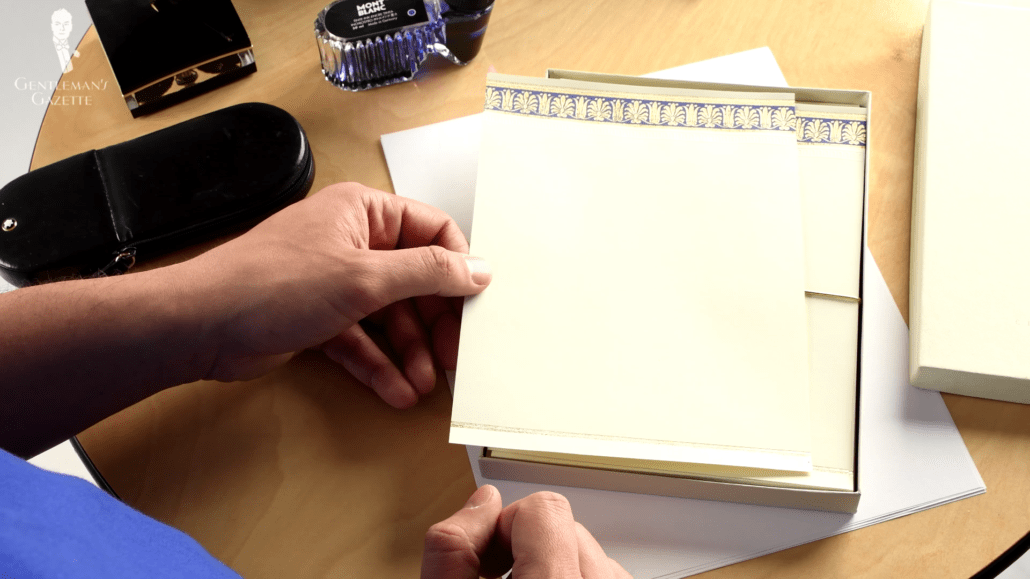
The broader your nib, the more ink will transport onto the paper and the longer it takes to dry. So if you write with a fountain pen and you touch it with your hand, you may smudge it and it will look terrible. To prevent that you have to either let it dry or use an ink blotter. If you want to get ahead quickly, and of course, always be aware that you can smudge the ink.

2. Post The Cap (Or Don't)
Typically fountain pens come with a cap, and some people like to "post" the cap on the back part of the fountain pen because that creates a different balance. Personally, I have larger hands, and like larger fountain pens and posting a cap on top is not really necessary, and it creates a weird balance for me. So, I typically don't do it with my fountain pens.
Some fountain pens, however, especially smaller ones are designed to have a cap posted in the back for the perfect balance. Again, this is something you have to try out yourself and see what kind of feel you like. On vintage fountain pens, I've often seen a cap crack, probably because it was posted too often and too aggressively. So, personally, that's another reason why I don't do it. The fountain pen I use for signatures is actually in a stand on my desk and the cap is mounted to the stand so I couldn't even have the opportunity to post a cap on it.

3. Hold The Pen at The Correct Angle
When you write with a fountain pen, it's essential that you keep it at the right angle, and that you're not flexible with your fingers. So, what exactly does it mean? If the tip of your nib is facing down on the paper and the slit is facing up, it should have a net angle of about 45 to 55 degrees. Once with that angle, write a few words to find that "sweet spot" for you that feels comfortable writing.
If you angle your nib above 55 degrees or below 45 degrees, it won't write as nicely, it won't be as smooth, and the ink won't be transported as well onto the paper, and it's just weird, it also sounds strange and scratchy. You also want to avoid twisting the pen because the tines should be in touch with a paper at times, otherwise, the ink won't flow.
4. Keep Your Hand Rigid
A really important distinction of writing with a fountain pen from writing with a roller-ball or ballpoint pen is that you have to keep your hand rather rigid. What do we mean by that? Well, some people are finger writers and they move their hand and their fingers as they write. With a round ballpoint pen that is okay because it works in every angle but with a fountain pen with a straight nib, that is not the case.
So, once you have the right angle with your fingers, you shouldn't really adjust your wrist; it should just stay rigid, so you just keep on writing. Yes, there can be a little bit of movement, but you'll figure out at what point in time it's too much movement and the pen won't write anymore. As a general rule, your arm and your shoulder will do more of the work than your wrist. Honestly, it sounds more difficult than it is, if you just try it a few times you'll get the hang of it pretty quickly.

5. Apply The Right Pressure
Last but not least, you have to learn how to apply the right amount of pressure onto your nib. As the tip of the nib touches the paper, just apply gentle pressure and you'll feel how the ink flows out. Please don't press hard on it because it may damage your nib as well as the paper. Also, it means that you'll get a lot more ink out of the nib and just not a good look, you'll likely smudge it.
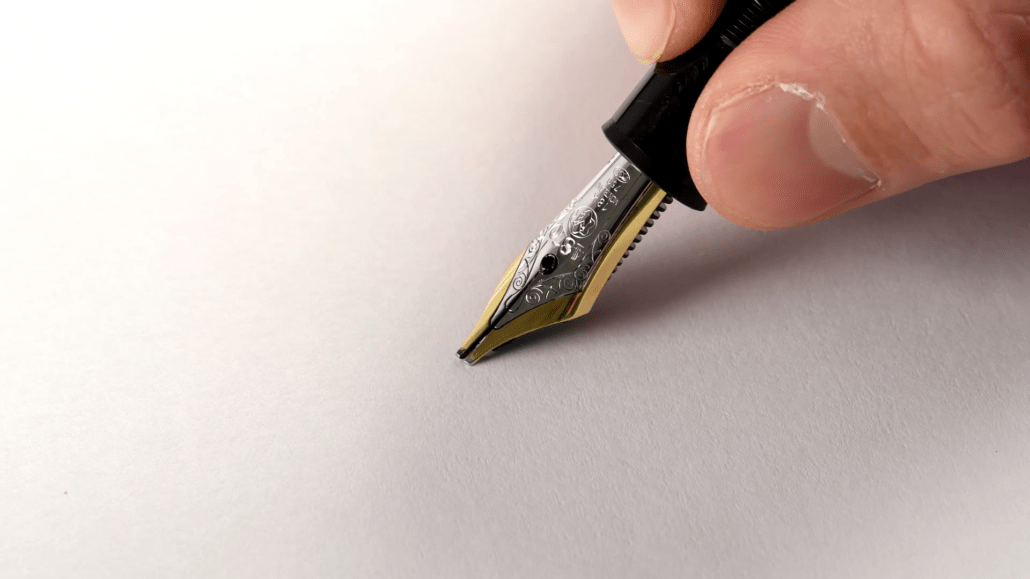
Can Lefties Write with A Fountain Pen?
Back in the old days, people who were lefties had to actually learn how to write with their right hand because it was the "proper" way to do it. In this day and age, children learn how to write with their left hand; it just requires a different positioning for their hand, so they don't smudge the writing because it goes from left to right.
Personally, I'm right-handed, so I can't speak from experience, but I know that lefties have found a way to hold it in a proper way so you don't smudge your writing. If you are a lefty, I suggest you get a fine, medium nib because it allows for greater angle variation. Then, of course, you have to practice and I suggest you Google for a video for a lefty who shows you how to do it because my left-hand writing would not be a good example!
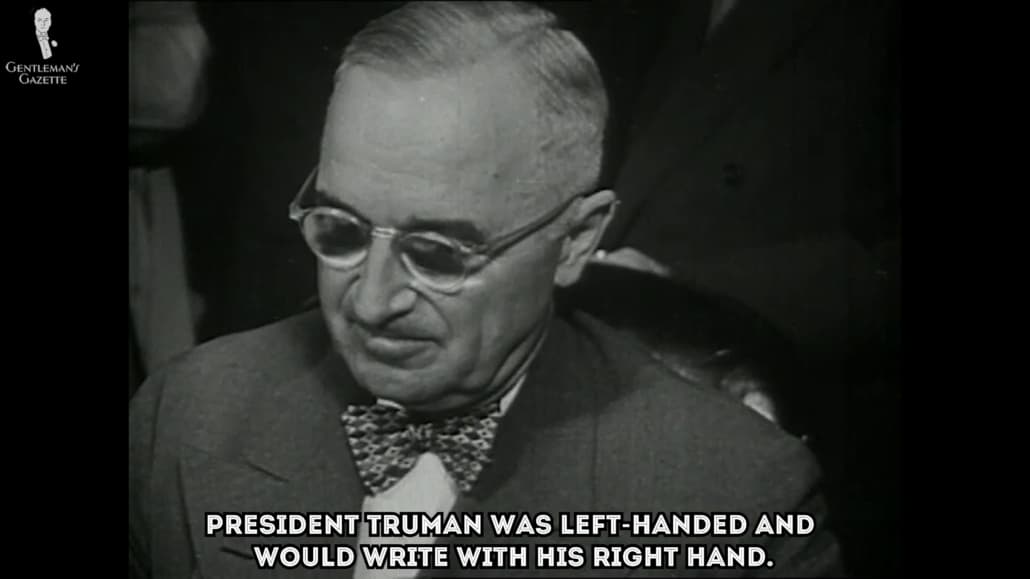
Fountain Pen Care Tips
So, now that you know how you choose the right fountain pen for your hand and how you write with it, what else do you need to keep in mind?
1. Keep The Cap On
You should always keep the cap on top of the nib when you don't write with the fountain pen. Why? Well, if you don't, it dries out and you'll have a hard time actually starting to write the next time around. Also, your nib may get damaged, so unlike with a ballpoint pen, you always want to put the cap and cover your nib.

2. Clean Your Fountain Pen Regularly
A fountain pen needs a bit more maintenance which means it has to be cleaned regularly. While some people suggest cleaning your fountain pen every two months, I personally do it once every couple of years. Ultimately, it depends on how often and frequently you use it and if it looks dirty and it doesn't write properly, it's time for a clean.
To do it, I suggest you hold your fountain pen under running water, you can also put it in a glass of water, let it soak and you can exchange the water until you don't see any more ink color. A much faster way to clean your fountain pen is to use an ultrasonic cleaner, but that may be too costly if you just have one fountain pen. Ideally, you take all the parts apart, wash them individually, and let them dry gently on a cloth towel, for example, so you make sure there's no water in the ink reservoir, otherwise, when you write and there's higher water content, your ink won't look as strong and it's also more likely to bleed.

3. Keep It Away From Extreme Temperatures
Avoid exposing your pen with the ink to extremely cold temperatures because it may freeze or you shouldn't just let it sit in the attic where it gets really hot because the ink can also dry in and then cleaning it may take a much longer time.
That being said, there are certain things that have a certain stabilizer added that is supposed to keep them from drying in but that goes only so far. If you expose the ink to extreme temperatures, it will dry out. If you live in an extremely cold environment, you can also try Noodlers Polar Ink which is freeze-resistant. Personally, I like the inks from Montblanc because they have nice colors and it doesn't dry and even if I don't use the fountain pen for a while. So what are the ideal conditions for ink storage? I'd say, I'd rather have the cool room temperature, darkest spot.

Should You (or Should You Not) Lend Your Fountain Pen?
One hotly debated item is if you should lend your fountain pen to someone else. Some people argue that giving your fountain pen to someone else means the whole dynamic of your fountain pen that took several weeks to achieve will disappear because someone else holds the fountain pen slightly different than you do. Others think that it doesn't matter if someone else takes a quick note with it. At the end of the day, it's something for you to decide, and you can see and feel how long it takes to write in your fountain pen until it feels like it is your fountain pen.
Conclusion
While writing well with a fountain pen is a skill that will take time and practice to master, the results are second to none. If you've decided to take the plunge but are wary of potential difficulties, take a look at our guide on common fountain pen mistakes and how to avoid them, and you'll be writing confidently in no time!
Do you write with a fountain pen? How are you liking the experience? Let us know in the comments!
Outfit Rundown
I'm wearing a white dress shirt paired with a Prince of Wales check coat in a light brown and dark brown with an orange-reddish overcheck. I'm pairing it with a madder silk bow tie in red with elements of blue and yellow, and my pocket square is a wool-silk blend that likewise picks up the color of red, yellow, and blue. You can find both of them in our Fort Belvedere shop here.
My pants are black, cotton chinos from Ralph Lauren, I'm pairing it with a pair of whole-cut Oxfords in a chestnut medium brown and a belt in brown that matches that color and I chose a gold buckle from our belt system that works well with my rings.
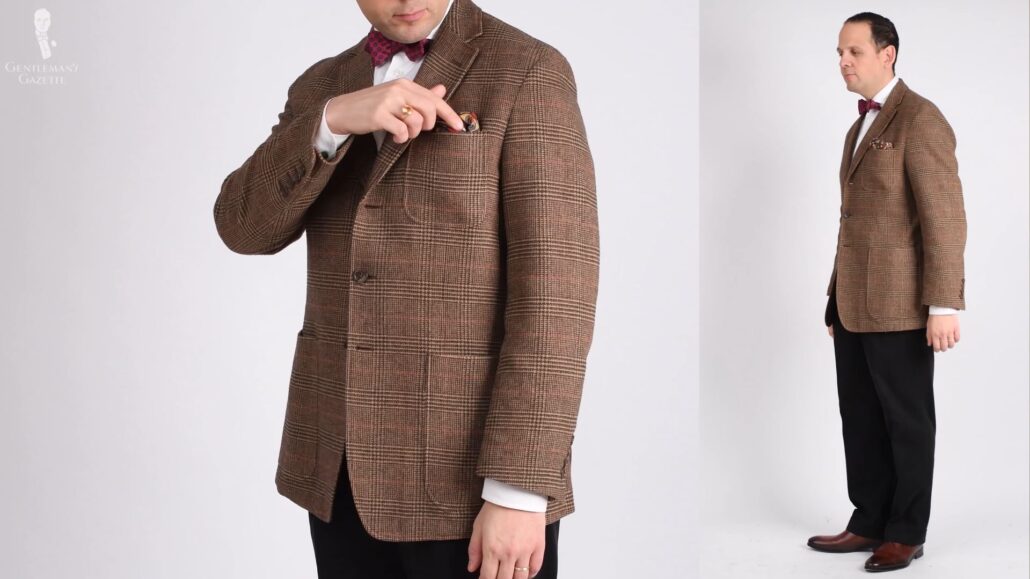
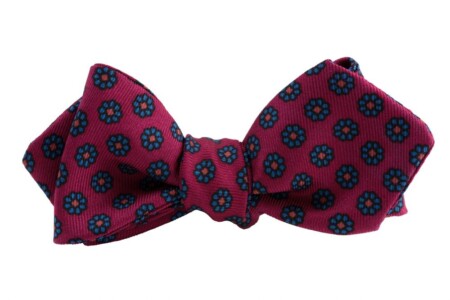
Fort Belvedere
Bow Tie in Soft Ancient Madder Silk with Red Macclesfield Neats Micropattern
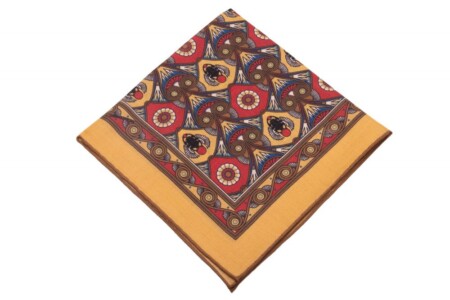
Fort Belvedere
Straw Yellow Pocket Square Egyptian Scarab pattern in antique brass, blue, black, cardinal red with brown contrast edge
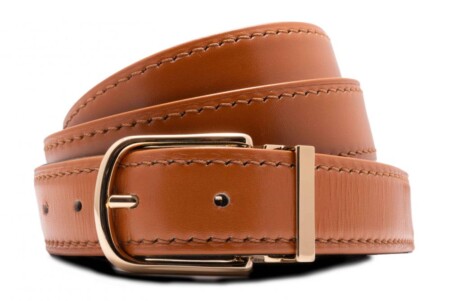
Fort Belvedere
Tan Cognac Brown Calf Leather Belt Aniline Dyed Cut-To-Size – Folded Edges 3cm x 120cm
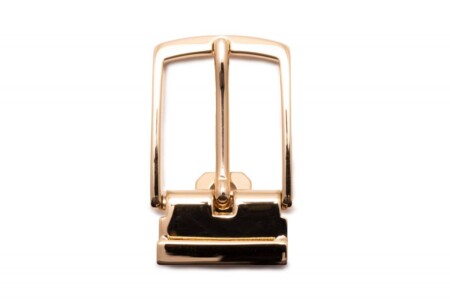
Fort Belvedere
Benedict Gold Solid Brass Belt Buckle Exchangeable Oblong Rectangle with Gold Plating Hypoallergenic Nickel Free
For my socks, I chose a pair of ribbed, mottled yarn socks in blue which are a prototype that I'm testing right now. It picks up the color from the pocket square and a bowtie, thus tying it all together. If you're interested in the belt system where you can exchange every buckle with every belt please check it out here.
The fountain pen I'm using personally is a Montblanc Meisterstuck. All the other pens you've seen are from different videos and we have quite a few of them on our channel so if you're interested, check them out.
Source: https://www.gentlemansgazette.com/write-with-fountain-pen/
